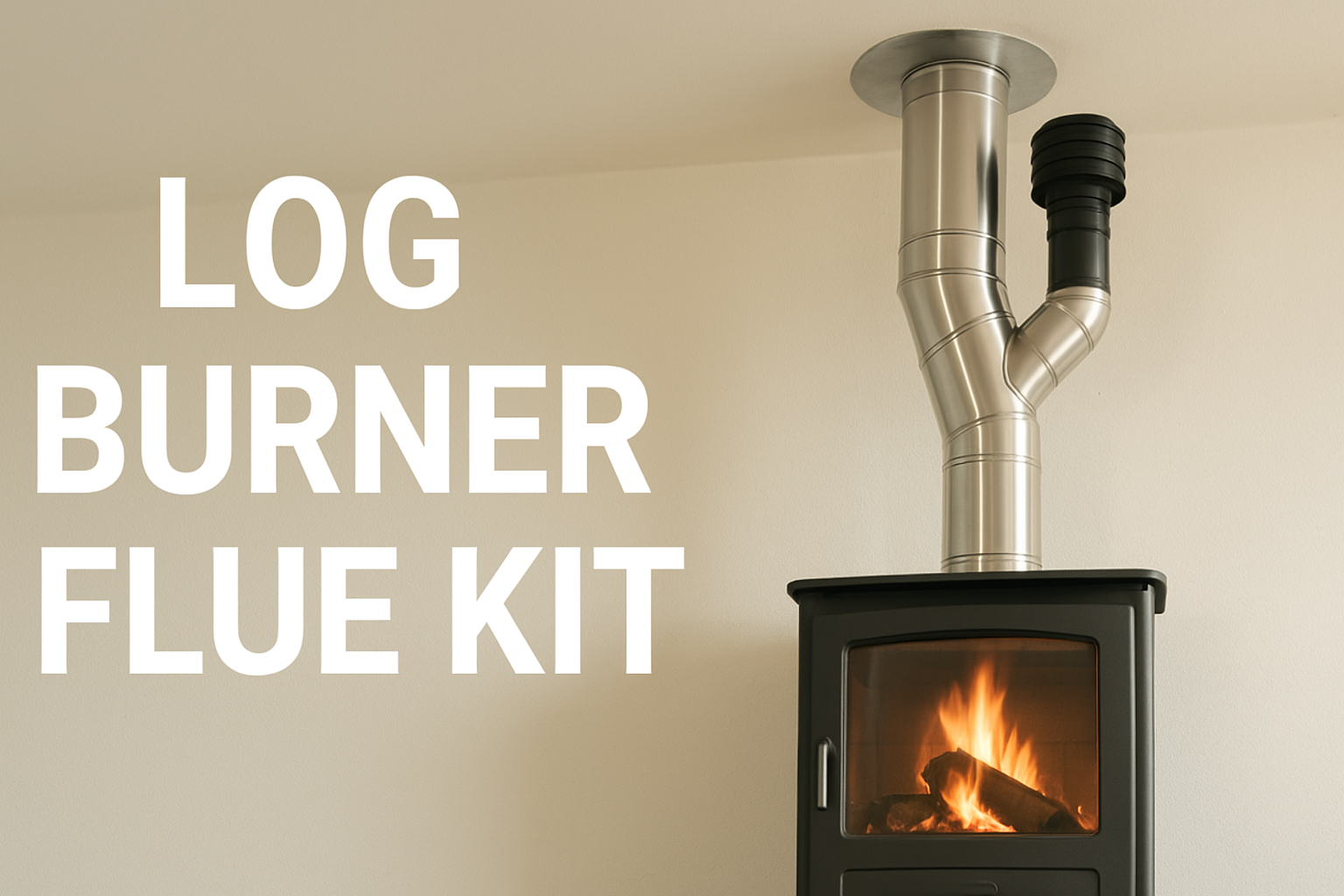A log burner is one of the most efficient and eco-friendly ways to heat a home. However, to ensure safe operation and maximum efficiency, a flue kit is essential. A flue kit forms the pathway that removes smoke and gases from your burner, keeping your home warm, clean, and safe.
In this guide, we’ll explain what a log burner flue kit is, the different types available, how to install one, and tips for maintenance.
What Is a Log Burner Flue Kit?
A flue kit is a set of components that connect your log burner to the outside environment. It ensures proper ventilation by carrying away smoke, fumes, and carbon monoxide while maintaining good airflow for efficient combustion.
Most log burner flue kits include:
- Flue pipes (single or double wall)
- Elbows and bends for routing
- Flashings and storm collars for roof sealing
- Chimney cowl or rain cap to prevent downdrafts and water ingress
- Support brackets and fittings
Why Do You Need a Flue Kit?
Without a reliable flue kit, a log burner cannot function safely. Here’s why it’s necessary:
- Ventilation: Safely expels smoke and harmful gases.
- Draft Control: Creates airflow that keeps the fire burning efficiently.
- Safety: Prevents backflow of dangerous carbon monoxide.
- Moisture Protection: Stops rain and debris from entering your chimney.
- Heat Efficiency: A well-installed flue maintains steady temperatures.
Types of Log Burner Flue Kits
Depending on your installation, you can choose from different flue system options:
1. Single Wall Flue Kit
- Made from stainless steel.
- Best for connecting directly to the burner inside the room.
- Requires clearance from combustible materials.
- More affordable but less insulated.
2. Twin Wall (Insulated) Flue Kit
- Double-layer stainless steel with insulation between walls.
- Can pass through ceilings, walls, and roofs safely.
- Maintains higher temperatures inside the flue, improving draft.
- Ideal for homes without an existing chimney.
3. Flexible Flue Liner Kit
- Flexible stainless liner inserted into an existing masonry chimney.
- Used in chimney restorations to ensure safe, leak-free operation.
Key Installation Considerations
Installing a flue kit is a technical task and must meet local building and safety codes. Here are some important factors:
- Height Requirements: The flue should extend above the roofline for proper draft (usually at least 600 mm above the highest point within 3 m).
- Clearances: Maintain safe distances from combustible walls, ceilings, and roof structures.
- Supports & Bracing: Use brackets to secure vertical flue sections.
- Sealing: Apply roof flashing and storm collars to prevent leaks.
- Compliance: In most regions, log burner installations must comply with local building regulations (such as AS/NZS 2918 in Australia or Building Regulations Part J in the UK).
Tip: Always hire a certified installer unless you are highly experienced, as incorrect installation can be dangerous.
Maintenance of Flue Kits
To keep your log burner and flue system safe and efficient:
- Annual Cleaning: Remove soot and creosote buildup to prevent chimney fires.
- Inspection: Check joints, seals, and pipe integrity regularly.
- Cap or Cowl Check: Ensure the chimney cowl is intact to block rain, birds, and downdrafts.
- Professional Sweep: Have a certified chimney sweep service your system yearly.
Cost of Log Burner Flue Kits
Prices vary based on type and size:
- Single wall kits: $150–$400
- Twin wall insulated kits: $600–$1,200
- Flexible flue liners: $300–$700 (depending on chimney length)
- Professional installation: $800–$2,000 depending on complexity
While a flue kit is an investment, it ensures safety, compliance, and long-term performance of your log burner.
Choosing the Right Flue Kit
When selecting a log burner flue kit, consider:
- Compatibility with your stove model.
- Material Quality (stainless steel is best).
- Insulation Needs depending on whether you’re using single or twin wall.
- Supplier Reputation – choose trusted fireplace and stove specialists.
- Warranty – look for products with at least 5–10 years of coverage.
Conclusion
A log burner flue kit is not just an accessory—it’s a critical safety and performance component for your wood stove. By choosing the right kit, ensuring proper installation, and maintaining it regularly, you can enjoy the warmth of your log burner with complete peace of mind.
Whether you’re upgrading an old chimney with a liner or installing a twin wall flue system from scratch, investing in a quality flue kit guarantees efficiency, safety, and comfort in your home.




